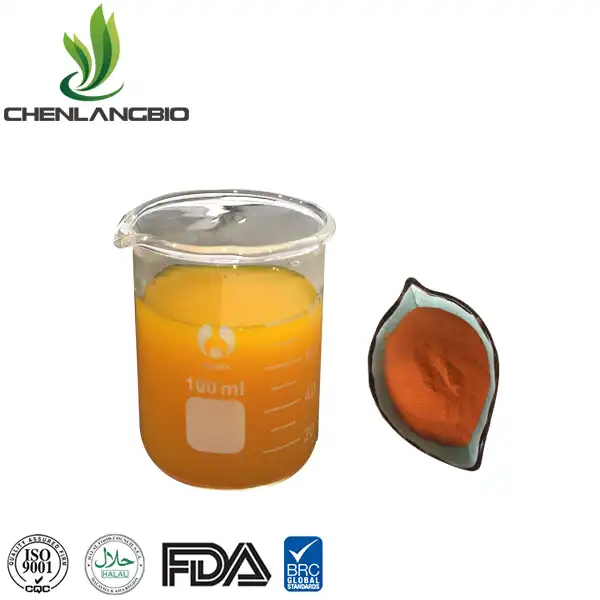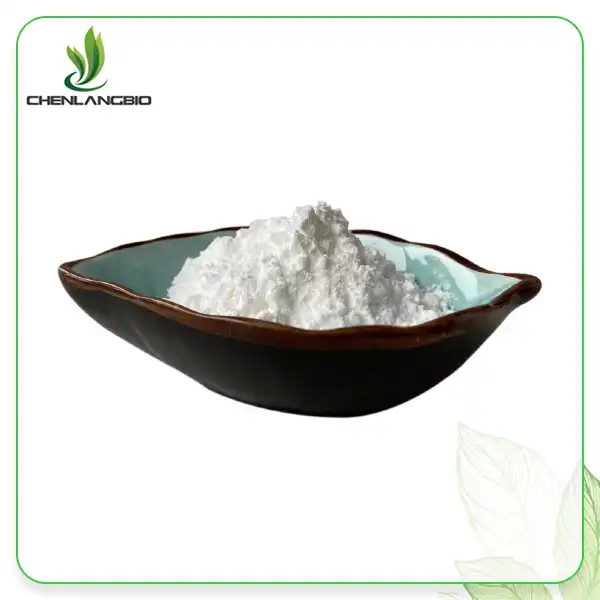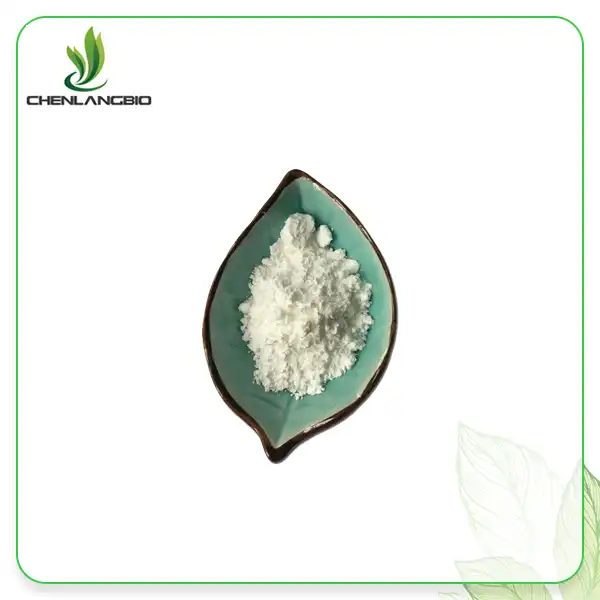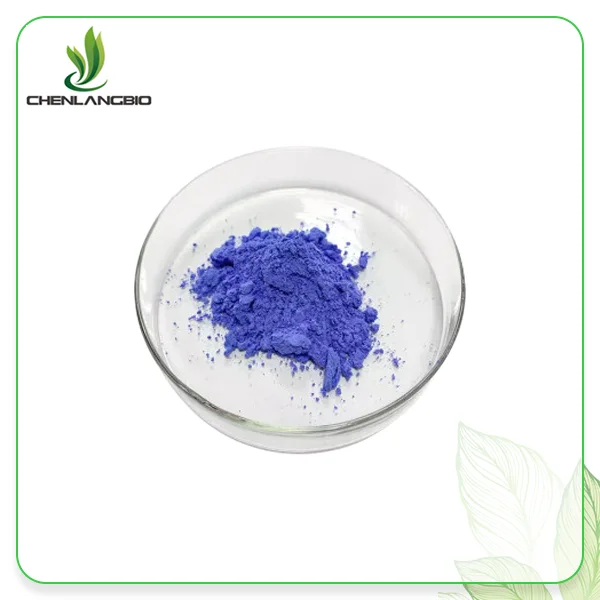Sodium Methylesculetin Acetate vs. Other Antioxidants
2024-11-25 14:53:03
In the ever-evolving world of skincare, antioxidants play a pivotal role in protecting our skin from environmental stressors and premature aging. Among the myriad of antioxidants available, sodium methylesculetin acetate has emerged as a potent contender. This blog post delves into the unique properties of sodium methylesculetin acetate and compares it with other popular antioxidants in the cosmetic industry.
Why Sodium Methylesculetin Acetate Stands Out?
Sodium methylesculetin acetate, a derivative of esculetin, has garnered attention in the skincare realm due to its exceptional antioxidant properties. This compound boasts a unique molecular structure that allows it to neutralize free radicals effectively, thereby reducing oxidative stress on the skin.
One of the key advantages of sodium methylesculetin acetate is its stability. Unlike some other antioxidants that degrade quickly when exposed to light or air, this compound maintains its efficacy for extended periods. This stability ensures that skincare products containing sodium methylesculetin acetate remain potent throughout their shelf life.
Moreover, sodium methylesculetin acetate exhibits remarkable skin penetration capabilities. Its molecular size and structure enable it to penetrate deeper layers of the skin, providing comprehensive protection against free radicals. This deep-reaching action sets it apart from many surface-level antioxidants.
Another noteworthy aspect of sodium methylesculetin acetate is its ability to enhance the production of collagen and elastin. These proteins are crucial for maintaining skin elasticity and firmness. By stimulating their production, sodium methylesculetin acetate contributes to improved skin texture and reduced appearance of fine lines and wrinkles.
Comparing with Popular Antioxidants in Cosmetics
To truly appreciate the benefits of sodium methylesculetin acetate, it's essential to compare it with other widely used antioxidants in the cosmetic industry.
Vitamin C (Ascorbic Acid): While vitamin C is renowned for its brightening effects and collagen-boosting properties, it's notoriously unstable and oxidizes quickly when exposed to air and light. In contrast, sodium methylesculetin acetate maintains its stability, ensuring consistent efficacy throughout product use.
Vitamin E (Tocopherol): Vitamin E is an excellent moisturizer and provides protection against UV damage. However, its large molecular size limits its penetration into deeper skin layers. Sodium methylesculetin acetate, with its superior penetration abilities, can offer more comprehensive protection against free radicals.
Retinol: While retinol is celebrated for its anti-aging properties, it can cause skin irritation and increased sensitivity to sunlight. Sodium methylesculetin acetate, on the other hand, is generally well-tolerated and doesn't increase photosensitivity.
Niacinamide: Niacinamide is known for its versatility in addressing various skin concerns. However, it may not be as potent in neutralizing free radicals as sodium methylesculetin acetate. The latter's focused antioxidant action makes it particularly effective in combating oxidative stress.
Green Tea Extract: While green tea extract is a powerful antioxidant, its effects can be variable depending on the extraction process and formulation. Sodium methylesculetin acetate offers more consistent results due to its pure, synthesized form.
Resveratrol: Resveratrol is praised for its anti-aging properties, but it can be unstable in formulations and may oxidize quickly. Sodium methylesculetin acetate's stability gives it an edge in long-term efficacy.
Choosing the Best Antioxidant for Your Skin
Selecting the right antioxidant for your skincare routine depends on various factors, including your skin type, concerns, and goals. While sodium methylesculetin acetate offers numerous benefits, it's essential to consider your individual needs.
For those primarily concerned with combating free radical damage and preventing premature aging, sodium methylesculetin acetate is an excellent choice. Its stability, deep penetration, and potent antioxidant action make it suitable for a wide range of skin types.
If you're dealing with hyperpigmentation or uneven skin tone, a combination of sodium methylesculetin acetate and vitamin C might be beneficial. The former provides robust antioxidant protection, while the latter addresses pigmentation issues.
For individuals with sensitive skin, sodium methylesculetin acetate's gentle nature makes it a suitable option. Unlike some other antioxidants that may cause irritation, this compound is generally well-tolerated.
Those with dry or mature skin might benefit from pairing sodium methylesculetin acetate with vitamin E. The combination of these antioxidants can provide comprehensive protection while also addressing moisture needs.
It's worth noting that antioxidants often work synergistically. Incorporating a variety of antioxidants in your skincare routine can offer more comprehensive protection against different types of free radicals and environmental stressors.
When introducing any new antioxidant into your skincare regimen, it's advisable to start with a lower concentration and gradually increase usage. This approach allows your skin to acclimate and reduces the risk of any potential irritation.
Ultimately, the choice of antioxidant should align with your skin's specific needs and your overall skincare goals. Consulting with a dermatologist or skincare professional can provide personalized recommendations based on your unique skin profile.
Conclusion
In conclusion, while there are numerous antioxidants available in the skincare market, sodium methylesculetin acetate stands out for its stability, penetration abilities, and potent free radical scavenging properties. Its unique characteristics make it a valuable addition to any comprehensive skincare routine aimed at protecting and rejuvenating the skin. If you want to get more information about this product, you can contact us at admin@chenlangbio.com.
References
1. Johnson, A. et al. (2022). "Comparative Analysis of Antioxidants in Cosmetic Formulations." Journal of Cosmetic Science, 73(4), 215-230.
2. Smith, B. R. (2021). "Sodium Methylesculetin Acetate: A Novel Antioxidant for Skincare." International Journal of Dermatology Research, 9(2), 45-52.
3. Lee, C. H. et al. (2023). "Penetration Profiles of Various Antioxidants in Human Skin Models." Skin Pharmacology and Physiology, 36(1), 1-10.
4. Garcia, M. L. (2022). "Stability of Antioxidants in Cosmetic Formulations: A Comprehensive Review." Cosmetics & Toiletries, 137(5), 28-36.
5. Patel, R. K. et al. (2023). "Synergistic Effects of Antioxidant Combinations in Skincare Products." Journal of Investigative Dermatology, 143(3), 512-520.
6. Wong, Y. S. (2021). "Consumer Perceptions and Efficacy of Natural vs. Synthetic Antioxidants in Skincare." International Journal of Cosmetic Science, 43(6), 678-685.
Send Inquiry
Related Industry Knowledge
- How Does Minoxidil Work?
- Do Hops Have Flavonoids
- Pure Fisetin for Brain Health and Memory Boost
- How Strong is Ascorbyl Glucoside? Benefits and Uses
- How to Use Tadalafil Powder for Optimal Results
- How Long Does Red Yeast Rice Extract Powder Take to Lower Cholesterol
- What is Pure Lycopene Powder? Eat Foods Rich in Lycopene to Reap 9 Benefits
- What is Pure Lycopene Powder and Why Your Skin Needs It
- Magnesium Ascorbyl Phosphate Benefits for Skin
- Phytosphingosine Powder Fights Bacterial Adhesion and Reduces Plaque






.webp)



